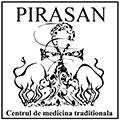Cerebral atrophy defines any morphological and functional degeneration of the brain tissue that is caused by the destruction of the nerve cells and of the neuronal junctions. As the atrophy process has become generalized, involving the entire brain structure, the following become obvious: dehydration of the brain tissue as well as its reduced size.
In the case of focal atrophy, the structure and the function of only one brain area are affected. The brain structure alterations disturb the patient’s motory, psychic and affective life. The intellectual efficiency is considerably reduced. In the advanced stages of brain atrophy it even comes to complete dementia.
Causes
Cerebral atrophy shows itself in a great number of brain diseases, as a result of their evolution. The manifestations and the evolution of the cerebral atrophy differ from individual to individual, depending on the type of its related diseases or its main cause.
- Brain Concussions and Traumas
- Accidental or surgical brain lesions
- Cerebrovascular accident (brain stroke)
- Cerebral paralysis (the motory functions are affected as a result of a number of local lesions in specific brain areas)
- Huntington disease (or other hereditary genetic diseases causing a harmful accumulation of proteins in the neurons)
- Alzheimer
- Leukodystrophy (a disorder characterized by demyelination)
- Mitochondrial encephalomiopathy (the basic neuron functions are affected)
- Multiple sclerosis (causes brain lesions, inflammation and destruction of the myelin)
- Infectious diseases (encephalitis, cerebral abscesses, neurosyphilis, AIDS – the pathogen agent causes an inflammatory reaction destroying both the neurons and their axons)
- Epilepsy
- Brain radiotherapy
- Cerebral ischemic vasculitis
- Migraine
- Cerebral atherosclerosis
- Chronic deficit of brain irrigation
- Cerebral hypoxia
- Alcohol or drug abuse
Diagnosis
Brain atrophy is diagnosed based on the specific symptomatology, by the CT-scan and the MRI.
Treatment
The acupuncture procedures and the hidroalcoholic herb extracts are used in special treatment plans that are designed in accordance with the patient’s health condition and the evolution of the disease from its onset to the beginning of the treatment. The treatment schemes are adjusted during the treatment, depending on the patient’s evolution and his body’s reaction to the applied therapies.
In an advanced stage of the disease, as the cerebral areas are deeply altered by the atrophy process, these areas will be isolated in order to arrest the evolution of the disease. The functions of the respective areas are transferred to areas of healthy brain tissue. The brain tissue structure of these areas is similar to that of the initial areas. The entire procedure is possible by accessing the brain area containing information about the structure and the functions of the entire brain. The brain makes a map in real time of the active brain areas and of their functions and it stores the information in a specific brain area. By accessing this brain area, the necessary information is taken to perform the transfer of the functions affected by the degenerative process.
The regeneration of the atrophied cerebral area is possible when the brain tissue is partially affected by the degenerative process. In this particular situation, the degenerated areas are dysfunctional, but to an extent that allows the restoration of the vascularisation and the recovery of the optimum oxygenation level. The treatment procedures also restore the local metabolic functions.
At the same time the factors are removed that have given birth to the brain atrophy. This process arrests the evolution of the degenerative process in the first place and it prepares the affected brain tissue for the later procedures that will relocate the functions or regenerate the atrophied regions.

